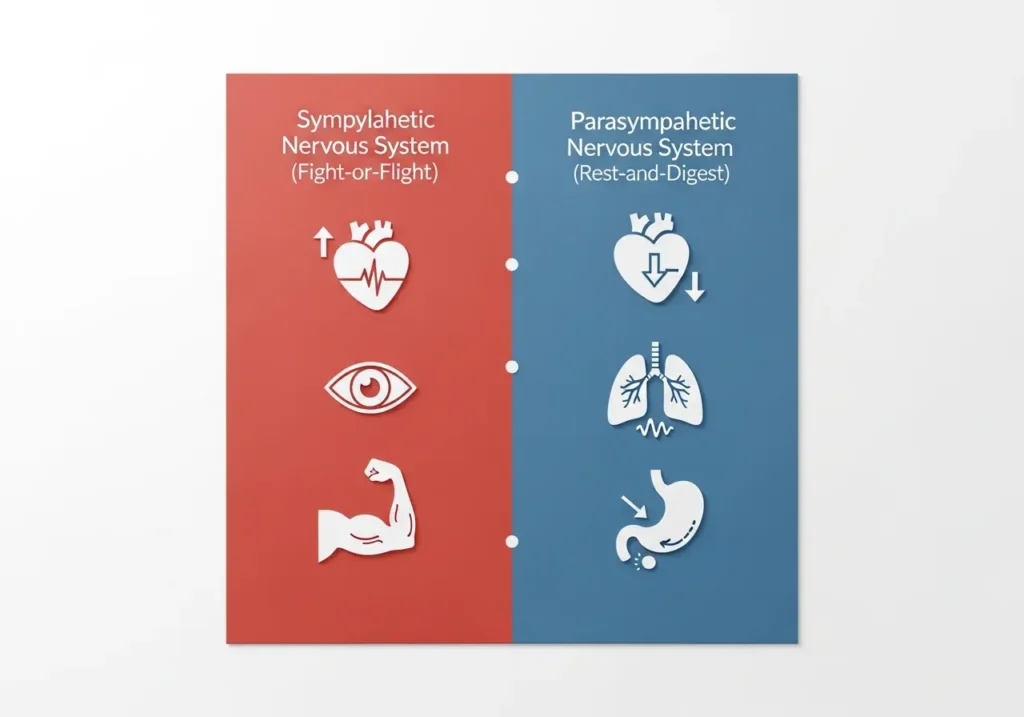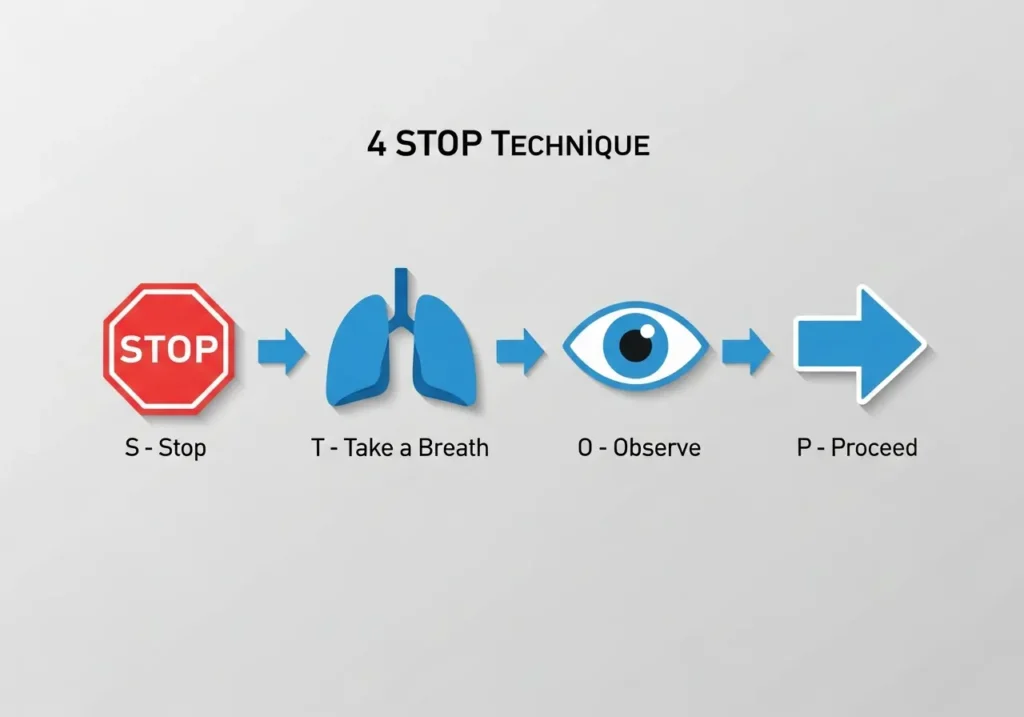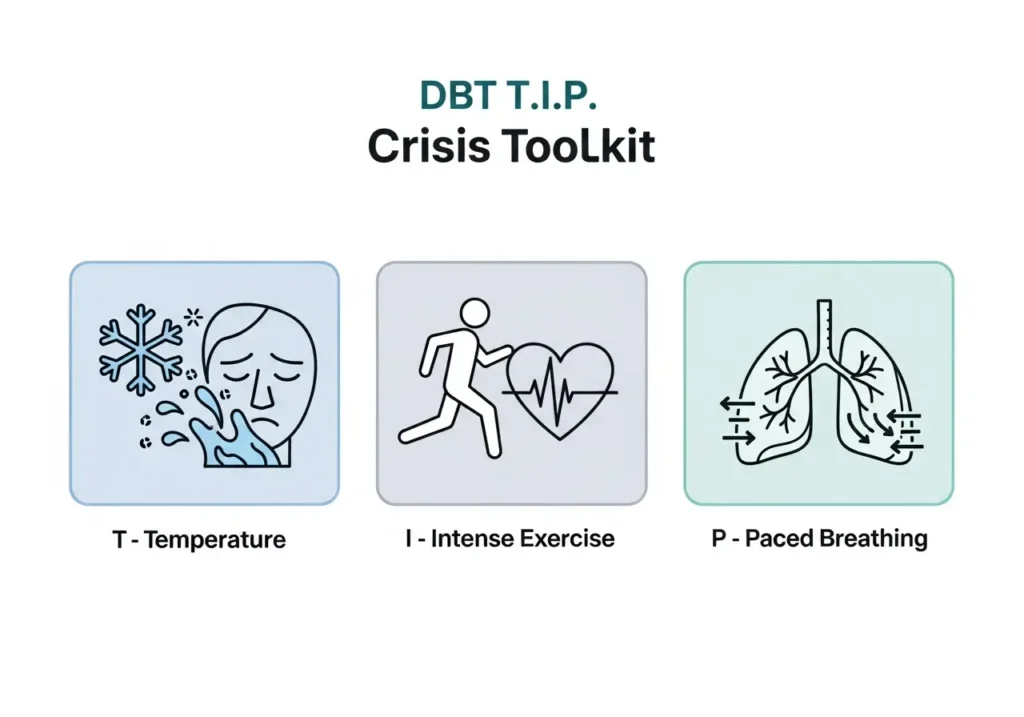Have you ever felt hijacked by an emotion? A moment where frustration, anxiety, or anger takes the driver’s seat, and you’re just along for the ride.
This experience is universal. But the ability to navigate it is what separates reactivity from responsiveness.
This is not a list of generic “calm down” tips. This is a definitive guide to the system of emotional self-regulation—a core component of our Ultimate Guide to Emotional Intelligence. We’ll explore the neuroscience of calm and provide an actionable toolkit to help you master your internal state.
The Foundation: What is Emotional Self-Regulation?
Emotional self-regulation is the ability to manage and influence which emotions you have, when you have them, and how you experience and express them.
It’s the process of responding to the full spectrum of human emotion in a way that is socially tolerable and flexible enough to permit spontaneous reactions.
A Learnable Skill, Not a Fixed Trait
This is the most critical concept: your ability to regulate is not a fixed personality trait.
It is a set of skills that can be learned, practiced, and mastered over time.
Self-Regulation vs. Self-Control: The Power to Pause and Choose
Self-control is often about suppressing or inhibiting an emotion. It’s a battle of willpower.
Self-regulation is more sophisticated. It’s about creating a space between an emotional trigger and your response, allowing you to choose a more effective action.
The Process Model of Regulation (Gross): Antecedent vs. Response-Focused

Stanford psychologist James Gross provides a powerful framework. He suggests we can intervene at two key points:
- Antecedent-Focused: Strategies we use before an emotion is in full force (e.g., choosing which situations to enter).
- Response-Focused: Strategies we use after an emotion has already been triggered (e.g., changing how we think or behave).
This guide focuses on building your toolkit for both.
The Neuroscience of Calm: Regulating Your Nervous System
To truly master regulation, you must understand the hardware it runs on: your nervous system. At ActionableSelf, we’ve coached hundreds of professionals, and we’ve seen firsthand that understanding your nervous system isn’t just theory—it’s the foundational step to lasting emotional control.
This is the “why” behind the techniques.
Your Brain’s Alarm System: Sympathetic Dominance in Trauma and Anxiety
When your brain perceives a threat, your sympathetic nervous system kicks in. This is the “fight-or-flight” response.
For many, due to stress or trauma, this system becomes overactive. You live in a state of chronic reactivity, where even small triggers feel like major threats.
The Polyvagal Theory: Your Body’s Pathway Back to Safety
Pioneered by Dr. Stephen Porges, the Polyvagal Theory explains how our body finds its way back to a state of safety and connection.
It highlights the role of the vagus nerve, which acts as a brake on the sympathetic “alarm system.” By consciously stimulating this nerve, we can guide our body back into a parasympathetic state of “rest and digest.”
From Chronic Reactivity to Parasympathetic Calm: How to Rewire Your Brain
You can train your nervous system to be less reactive.
Techniques like deep breathing and grounding aren’t just mental tricks; they are physical signals to your brain that you are safe, effectively rewiring your default response over time.

Simple diagram illustrating the Sympathetic vs. Parasympathetic states
The Core Toolkit: 3 Foundational Strategies for Daily Regulation
These are the foundational skills for managing day-to-day emotional fluctuations.
1. Cognitive Strategies: The Power of Reappraisal
Cognitive reappraisal involves changing your interpretation of a situation to alter its emotional impact.
How to Reframe Negative Thoughts: A Practical Example
- Initial Thought: “My boss didn’t acknowledge my work on the project. He must think I did a terrible job.” (Leads to anxiety).
- Reappraisal: “My boss is under a tight deadline and was likely distracted. His reaction probably isn’t about me.” (Leads to neutrality).
Cognitive Distancing: The “Fly on the Wall” Perspective
Observe your thoughts as if you were a neutral third party. Instead of “I am anxious,” try “I am noticing the feeling of anxiety.” This creates separation and reduces the thought’s power.
2. Mindfulness & Acceptance Strategies
These strategies are about allowing emotions to be present without letting them take control.
The Practice of Non-Judgmental Observation
Acknowledge the emotion without labeling it as “good” or “bad.” Simply notice the physical sensations it creates in your body.
Facial Regulation: The “Half-Smile” and “Willing Hands” Techniques
From Dialectical Behavior Therapy (DBT), these techniques use your body to signal acceptance to your brain. Adopting a relaxed, half-smiling expression and unclenching your fists can subtly shift your emotional state.
3. Behavioral & Response Strategies
These are actions you can take in the moment an emotion is triggered.
The STOP Technique (Stop-Think-Observe-Proceed)

- Stop: Pause completely. Do not react.
- Take a breath: Re-center yourself.
- Observe: Notice what you are feeling, thinking, and what is happening around you.
- Proceed: Choose a course of action that aligns with your values and goals.
How Deep Breathing Halts the Fight-or-Flight Response
Slow, deep breaths with a longer exhale (e.g., inhale for 4, exhale for 6) directly stimulate the vagus nerve, activating your parasympathetic nervous system and creating a physiological state of calm.
Somatic Regulation: Reconnecting with Your Body
Sometimes, you can’t think your way out of an emotion. Somatic (body-based) techniques bypass cognitive analysis and regulate from the bottom up.
The Body Scan: Mapping and Releasing Physical Tension
Lie down and bring your attention sequentially to different parts of your body, from your toes to your head. Simply notice any sensations—tension, warmth, tingling—without judgment.
Grounding Techniques to Anchor Yourself in the Present
When you feel overwhelmed, anchor your awareness in the present moment using the 5-4-3-2-1 Method:
- Name 5 things you can see.
- Name 4 things you can feel (e.g., your feet on the floor, the chair against your back).
- Name 3 things you can hear.
- Name 2 things you can smell.
- Name 1 thing you can taste.
Somatic Release Rituals (Tapping, Movement, Self-Massage)
Gentle, repetitive physical actions can be incredibly soothing. This can include tapping on your collarbone, gently rocking, or massaging your hands. These actions provide calming sensory input to your nervous system.
Strategic Flexibility: Matching the Technique to the Emotion’s Intensity
This is the system ambitious achievers need. Not all techniques are right for all situations.
- For Low-Intensity Emotions: Optimize with Cognitive Reappraisal. Your logical brain is still “online” and can effectively reframe the situation.
- For High-Intensity Crises: Prioritize Distraction and Grounding. Your logical brain is “offline.” The priority is to de-escalate, not analyze.
- The Danger of Rumination: Attempting to analyze “why” you feel so intensely in the middle of a crisis often leads to rumination, which amplifies the emotion. De-escalate first, analyze later.
The Crisis Kit: Advanced DBT Skills for Rapid Response
When you need to reduce extreme emotional intensity fast, use the T.I.P. skills from DBT. These techniques change your body chemistry.
Building Distress Tolerance: The Foundation of Crisis Management
Distress tolerance is the ability to survive a crisis without making it worse. These skills are for surviving, not for solving the problem in the moment.
The T.I.P. Skills Explained: Change Your Body Chemistry, Fast

Temperature:
- Action: Immerse your face in a bowl of cold water for 15-30 seconds.
- Why it Works: Activates the mammalian dive reflex, instantly slowing your heart rate.
Intense Exercise:
- Action: Engage in a brief burst of intense movement (e.g., sprinting in place) for 60 seconds.
- Why it Works: Burns off the adrenaline and cortisol fueling your fight-or-flight response.
Paced Breathing & Paired Muscle Relaxation:
- Action: Slow your breathing way down. Tense a muscle group as you inhale and relax it completely as you exhale.
- Why it Works: Directly activates the parasympathetic nervous system.
Co-Regulation: Using Social Connection to Find Safety
Our nervous systems are designed to attune to others. Speaking with a calm, trusted person can be one of the fastest ways to feel safe and regulate your emotional state.
The Modern Context: Self-Care and Digital Challenges
Setting Healthy Boundaries to Prevent Emotional Burnout
Regulation isn’t just about reacting; it’s about proactively managing your energy. Setting boundaries with work, relationships, and commitments is a crucial antecedent-focused strategy.
Digital Emotional Regulation (D.E.R.): When Distraction Becomes Avoidance
Using your phone to distract yourself can be a valid short-term strategy. However, it becomes problematic when it’s your only strategy, leading to chronic avoidance of difficult emotions.
The Biological Baseline: The Critical Role of Sleep and Nutrition
You cannot out-skill a poorly regulated biology. Consistent sleep and stable blood sugar are the non-negotiable foundations of emotional stability.
Emotional Dysregulation: When to Seek Professional Help
If you consistently feel that your emotions are controlling your life and interfering with your relationships or work, it may be time to seek professional support.
Under-Regulation vs. Over-Regulation: The Amplification Cycle
- Under-regulation: Characterized by intense, uncontrolled emotional outbursts.
- Over-regulation: Characterized by emotional numbness and suppression.
The Most Effective Therapies: DBT, CBT, and ACT Explained
- Dialectical Behavior Therapy (DBT): The gold standard for severe emotional dysregulation, focusing on mindfulness, distress tolerance, and interpersonal effectiveness.
- Cognitive Behavioral Therapy (CBT): Helps identify and change negative thought patterns and behaviors.
- Acceptance and Commitment Therapy (ACT): Uses acceptance and mindfulness strategies to increase psychological flexibility.
Frequently Asked Questions (FAQ)
1. How long does it take to get better at emotional regulation?
It’s a lifelong practice, but you can see significant improvement in 8-12 weeks of consistent, intentional effort with the right techniques.
2. Can you ever completely eliminate negative emotions?
No, and that shouldn’t be the goal. All emotions provide valuable data. The goal is to manage them effectively so they don’t manage you.
3. What is the single most important self-regulation skill?
Self-awareness. You cannot regulate an emotion you don’t recognize you’re having.
4. Is venting a healthy regulation strategy?
Research suggests that “letting it all out” in an aggressive way (expressive venting) can actually amplify anger. Processing emotions with a trusted friend is different and can be very effective.
5. Can these techniques help with anxiety or panic attacks?
Yes. Techniques like paced breathing, grounding, and the T.I.P. skills are highly effective for managing the physiological symptoms of anxiety and panic in the moment.
Conclusion: Your Path to a More Balanced Life
Mastering emotional self-regulation is not about becoming a robot. It’s about gaining the freedom to choose how you respond to life’s challenges.
Start Small: Integrating One Micro-Habit Today
Don’t try to implement everything at once. Choose one technique that resonates with you—like the STOP method or a 2-minute body scan—and practice it daily.
A Reminder on Self-Compassion and Growth
There will be days when you react impulsively. That is part of the process. The goal is not perfection, but progress. Treat each instance as data for growth, not as a failure.


